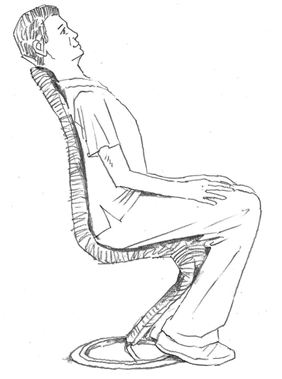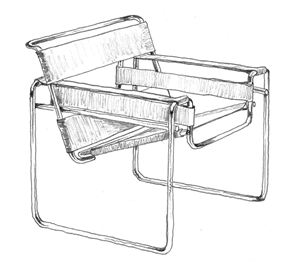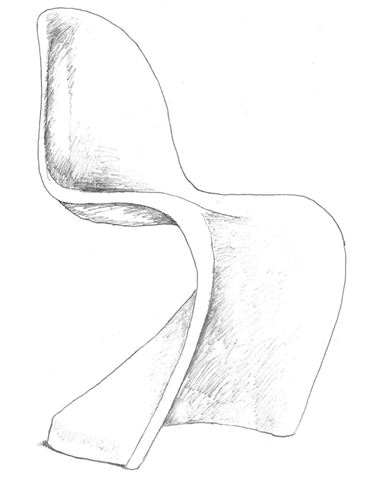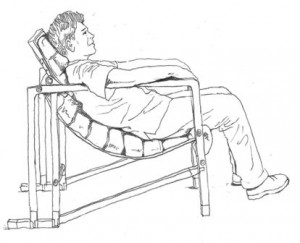
It’s not ideal for our health to sit for too long. Two factors are of key importance: our posture at the chair and the type of chair itself that we sit on.
Christine Ackers writes in Connected Perspectives that:
‘… the first criterion for judging a chair must be that sitting on it does no harm.’
She illustrates in some glorious sketches how chairs that have won awards for design may be at best uncomfortable and at worst impossible to sit on. Ideally, a chair design should look good but just as importantly, if not more so, it should support a natural upright posture. Many chairs have a seat that leans backwards including design classics such as the Wassily chair:

These tilt the pelvis back and curve our spines.
We need to be on our sitting bones – the two rocker-type bones at the base of our pelvis. This requires a flat seat base that has no side to side curves or front to back ones and is not backwards leaning. This, then, rules out the Panton Chair…

… and the Transat, neither of which support good postural use.

Back pain at work supposedly ‘caused by the computer’ is often determined by how we sit at the chair as well as what we sit on. A lot of money can be expended on designer office chairs when it’s learning how to sit properly that is the real key. Christine Ackers shows that it’s the marriage or sitting well as well as choosing a chair that suits function as well as form that is a happy one.
All drawings above by Joe Wauters and Jing Sheng Wang.
Connected Perspectives has a whole range of new articles with subjects that have never previously been collated, all showing the diversity of the Alexander Technique, including writings on:
- cycling, skiing, sex
- creativity in music and movement
- utopian societies in literature
- mindbody disciplines in eastern and western societies
- reflections on learning

